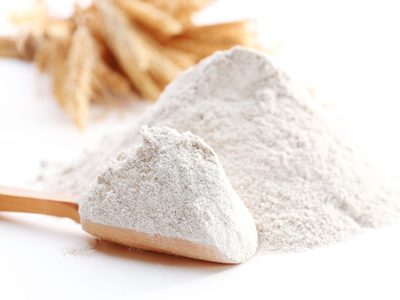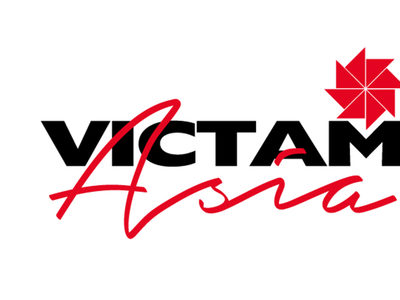A star performer among transforming Central and East European countries
by Mario Sequeira
Hungary, a new member of the E.U. since May 2004, is one of the most open economies in Central Europe. It is considered a star performer among the Central and East European countries, which began transforming their economies after the collapse of the Soviet Union in 1991.
Hungary took decisive steps relatively early in its shift to a market economy. It pursued an aggressive privatization policy and shrank the public sector.
This resulted in growth and investment — from foreign and domestic sources — and laid the groundwork for recovery from the early blows of drastic reform in all sectors, including agriculture.
Privatization has been widespread in the Hungarian economy. The food processing sector is 100% private. Foreign direct investment has played a significant role in modernizing production in all sectors.
Industry, which had slumped in the early years of change, rebounded in the mid-1990s, fueled by manufacturing, which now accounts for about 33% of GDP. After the fall of communism, Hungary rapidly became service-focused. The services sector, which was neglected under communism, now accounts for 63% of GDP.
Market reforms forced wrenching change and costs on agriculture. These included the privatization of land and businesses and the elimination of subsidies, which led to plummeting demand and increased production costs.
The sector shrank, but with about 35% of the population living in the countryside, it still holds a strategic place in the economy. Hungary’s agricultural sector accounts for 4% of GDP and employs about 8% of the workforce.
The sector’s major crops are wheat, maize, sunflower seeds, sugar beets and potatoes. Pork and poultry are Hungary’s biggest livestock industries.
Hungary is a major regional producer of maize (5 million to 7 million tonnes per year), wheat (3 million to 5 million tonnes per year), and sunflower seeds (close to 1 million tonnes in a good year).
Farming is 100% privatized. Former large state cooperatives were restructured or sold.
Land reform has resulted in an agricultural landscape of very small and very large farms, with few medium-sized units. Production is divided almost evenly between large corporate and cooperative farms and small, private plots.
In 2001, private farms produced 61% of grain output, including 49% of wheat and 69% of maize. They also produced more than 80% of fruits and vegetables. Very little of this output enters the market.
Hungary’s economy is heavily reliant on exports, in particular agricultural exports, which accounted for 5% of GDP.
Since accession to the E.U., Hungary’s agricultural sector has been subject to the Common Agriculture Policy (CAP), which was reformed in 2000. Different direct payment schemes have been incorporated into a single farm payment. Farm support is now geared specifically to market demand and requires farmers to meet quality, environmental and food safety standards.
The E.U. provides significant funding to Hungary’s agriculture sector. It provided €700 million (U.S.$816 million) for agriculture for the period 2000-04.
In January 2004, the E.U. and Hungary agreed on a rural development program worth €422.8 million for the period 2004-06. The E.U.’s contribution is €317.2 million, with the Hungarian government providing €105.6 million.
Direct payments to Hungarian farmers will be phased in over 10 years. Under the plan, farmers will be eligible to receive 25% of the full rate in 2004, 30% in 2005 and 35% in 2006. The government can increase the payments annually by up to 30% of the full rate.
One of the problems plaguing the grain industry is a shortage of storage capacity. Annual grain production ranges from 14 to 17 million tonnes. The Ministry of Agriculture and Rural Development Office (MVP), which buys intervention grain, has a total capacity of about 4.6 million tonnes.
Last season’s (2004-05) bumper crop of about 17 million tonnes has forced MVP to look at expanding storage by 1 million to 2 million tonnes this year.
Hungary has a progressive outlook with regard to the use of biotechnology in the grain industry. Extensive field trials are being conducted using genetically modified (GM) maize, wheat and other crops.
However, the government has agreed to adopt E.U. laws on the introduction of transgenic crops.
Field trials of three GM maize varieties, conducted by Monsanto, Hi-Bred Pioneer and Syngenta, all with borer resistance, have been completed and are awaiting approval. However, the government has declared a moratorium on one Monsanto variety with borer resistance.
An environmental impact study showing the variety had an adverse affect on the ecosystem and the lack of coexistence regulations were among the reasons the government gave for issuing the moratorium.
The Ministry of Agriculture and Rural Development has finalized draft regulations on coexistence and sent them to the European Commission for approval.
WHEAT AND FLOUR MILLING
In the 2005-06 crop year, Hungarian wheat has suffered quality problems because of untimely rain and cold weather. The government estimates a harvest of about 5 million tonnes and predicts half of that will fail to reach milling quality. This compares with 80% being of milling quality in good years.
Hungary’s food processing sector has been entirely privatized. Many startup companies emerged during privatization and former state-owned companies were sold. Foreign investment has played a critical part in the development of this sector.
Hungary has a well-established and ancient reputation in flour milling. It was one of the world’s first countries, with Germany, to begin milling wheat into white flour in the 18th century.
The milling industry is represented by the Hungarian Grain and Feed Association, founded in 1991 by private companies to represent their interests. The association also includes feed producers, grain traders and pastry producers.
It has a growing membership of about 150 member companies, representing 80 to 90% of the companies involved in the milling, grain export, soy meal import and feed milling industries.
Wheat consumption is estimated at just over 3 million tonnes annually. According to the International Grains Council, flour production has averaged more than 1 million tonnes since 1995, with the most recent figure being 1.04 million tonnes in 2003.
According to the U.S. Department of Agriculture (USDA), the milling industry used 1.7 million to 1.8 million tonnes of wheat in 2004, compared with about 1.45 million tonnes in 2003, and 170,000 to 200,000 tonnes of maize, compared to 122,000 tonnes in 2003.
LIVESTOCK AND FEED
Hungary’s livestock industries have never fully recovered from the severe reduction in meat consumption experienced in the years when the economy was changing and subject to harsh reforms.
Hungary’s beef consumption, 4 kilograms per person per year, is very low by European standards. Over the years, Hungarians have come to prefer chicken as a meat protein because it is cheaper than beef or pork.
Between 1988 and 1998, cattle inventories declined by 44%, hogs by 34% and poultry by 18%. The hog and poultry populations appear to have stabilized, but cattle numbers continue to fall.
At the beginning of 2004, the pig population was 4.7 million head, including sows, and the poultry population was 55.4 million adults.
After accession in 2004, pig farmers stopped receiving production subsidies, and the industry expects a 20 to 25% drop in production through 2006.
Since 1994, poultry production in Hungary has expanded. Chicken consumption is up as well and consumption of beef and pork appear to have stabilized at levels far below those of the Communist era.
The poultry and pig industries consume most of the country’s feed grains, the major ones being maize and barley, with small quantities of triticale and oats also grown.
In the 2005-06 season, the maize crop is estimated to reach 8 million tonnes and barley just under 710,000 tonnes.
According to the USDA, compound feed production in 2003 amounted to 4.5 million tonnes, 8% lower than in 2002.





